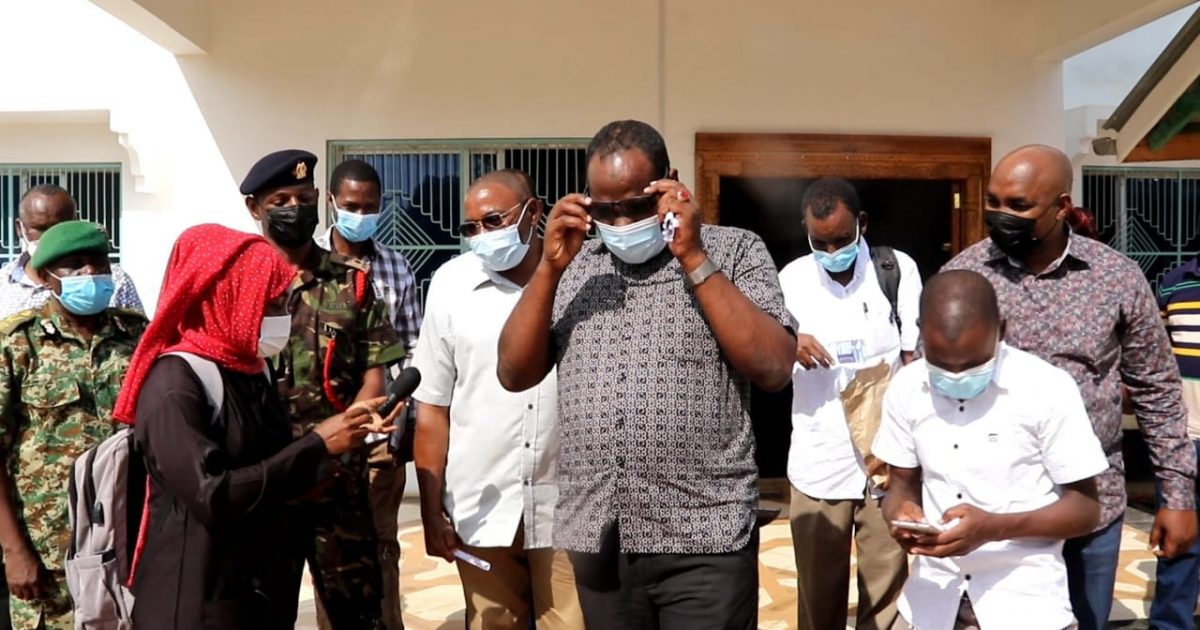The National Government is set to implement a raft of drought mitigation recommendations by the Lamu County Steering Group (CSG) Committee, in a bid to stem the impact of prevailing drought situation on farmers and pastoralists.
Lamu County Commissioner (CC), Irungu Macharia, stated that leaders had been drawn in so as to address the emerging concerns being brought out about by drought.
The CC was speaking to KNA in Mokowe, after holding a CSG meeting with Stakeholders from Lamu County Government, Kenya Red Cross, National Drought Management Authority and the Lamu West Member of Parliament (MP), Stanley Muthama.
“The drought conditions in Northern Counties of Garissa, Wajir and Tana River counties has seen pastoralists from these areas migrate to Lamu, in search of pastures for their animals,” Macharia revealed.
He added that this has led to increased competition for grazing and watering grounds among herders despite both resources being in short supply due to the prevailing dry spell.
CC noted that the drought situation in the frontier areas of Garissa, Tana River and Wajir could lead to increased incidences of pastoralist/farmer conflicts, which he added needed to be addressed through public barazas.
“We also have a situation where we are likely to see increased incidences of human/wildlife conflicts as we have seen in areas such as Mkunumbi, where two people were recently killed and one injured following a buffalo attack,” said Macharia.
Kenya Wildlife Service officials have also raised awareness over increased wildlife invasion to farms and water points, due the prevailing drought situation in the Boni area, which also hosts the bulk of the wildlife in Lamu.
“The national government is working towards implementing a relief food distribution and cash transfer programme for areas hard hit by the effects of drought,” he added.
Par for the course, Kenya Red Cross Lamu County Coordinator Kauthar Mohammed further stated that the humanitarian organization had already begun mapping out areas hard hit by the effects of drought in Lamu, with plans underway to provide food provisions.
“Areas so far marked as affected include, Poromoko, Mangai, Barsuba and Pandanguo which will immediately start receiving provisions due to the impact that the drought has had on the residents in those areas,” Kauthar stated.
Lamu West MP Stanley Muthama further opined that due to the heavy crop failure there is a serious food shortage across the county especially in Lamu West which carries the bulk of most farming activities in the county.
“There is need for both the national and county governments to come together to provide solutions based on the problems being faced on the ground by Lamu residents as they occur,” Muthama stated, adding that the problem of human wildlife conflict has further compounded on the low crop harvest issue with wildlife encroaching on farms in search of food.
The National Drought Management Authority has also begun putting in place a raft of measures such as the livestock for cash transfers programme that would aid mitigate the loss of herds to nature.
The Kenya Wildlife Service has also begun mapping out all catchment areas especially those with close proximity to human settlement areas in a bid to ensure that wildlife are supplied with water.
The county government has also embarked on an ambitious emergency water trucking programme in which the Lamu Water and Sewerage Company have been tasked with providing water to villages hard hit by the drought.
Lamu Water and Sewerage Company CEO, Paul Wainaina, who also spoke to KNA stated that water trucking is currently targeting areas such as Dide Waride, Pandanguo, Kiangwe, Mkunumbi, Bargoni, Miliminani and Ishakani, which have been hard hit by the low rainfall in the county.
By Amenya Ochieng





